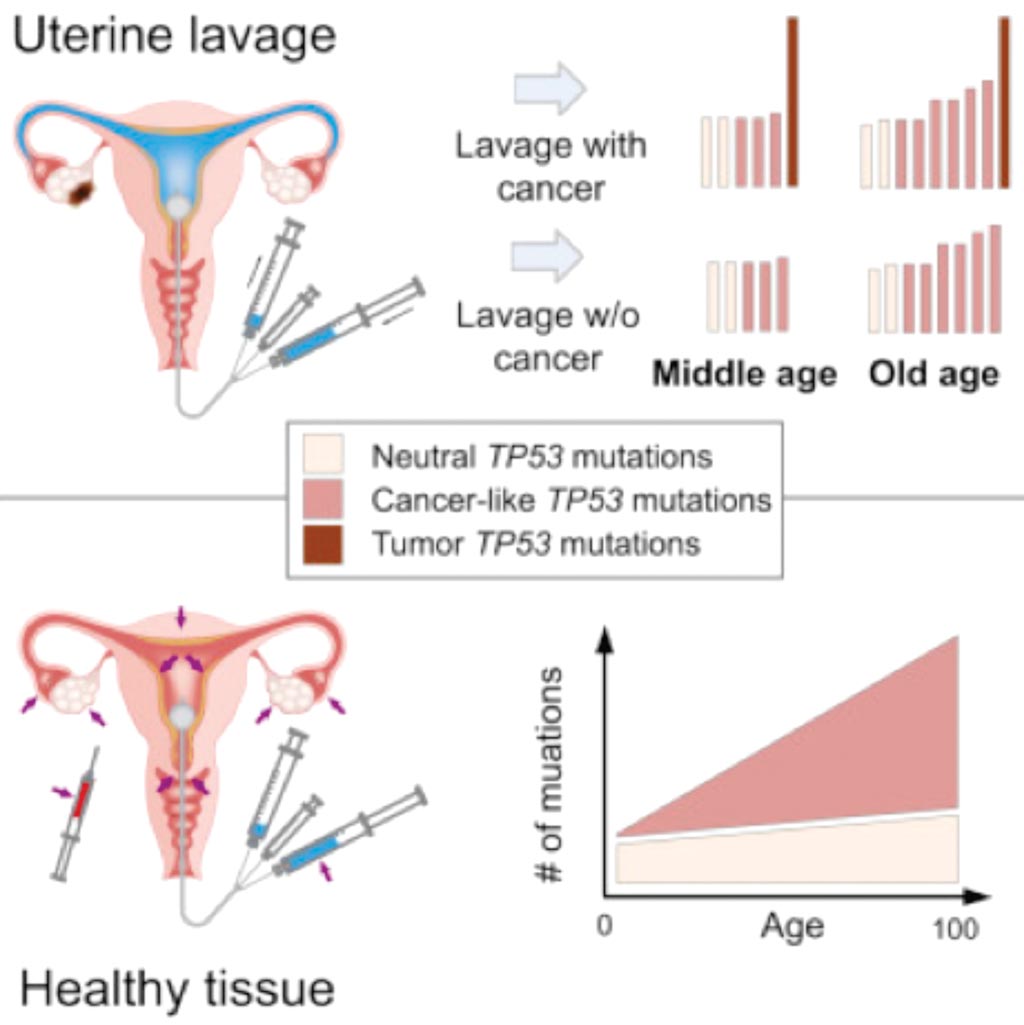Low-Frequency TP53 Gene Mutations Also Found in Healthy Women
By LabMedica International staff writers
Posted on 19 Jul 2019
Worldwide, more than 250,000 new cases of ovarian cancer are diagnosed each year, and two-thirds of these women die from the disease. This high mortality is largely due to the high frequency of metastasis before diagnosis and a lack of effective screening and early detection methods.Posted on 19 Jul 2019
In recent years, it has been demonstrated that cancers can be non-invasively detected in “liquid biopsies,” that is, blood or other body fluids in which cancers shed cells or DNA high-accuracy next-generation DNA sequencing. This promises a paradigm shift in early cancer detection by enabling the identification of mutant cancer molecules in minimally invasive body fluid samples.

Image: Ultra-Sensitive TP53 sequencing for cancer detection reveals progressive clonal selection in normal tissue over a century of human lifespan (Photo courtesy of University of Washington).
Scientists at the University of Washington (Seattle, WA, USA) and their colleagues combined trans-cervical lavage of the uterine cavity with duplex sequencing, an approach they argued would boost collection efficiency and their ability to detect mutations. Under blinded conditions, they analyzed samples from 10 women with ovarian cancer and 11 controls, and correctly identified ovarian cancer in eight of the 10 cases. But they noticed low-frequency background TP53 mutations within lavages from all the women, even those who did not have cancer, a finding they confirmed by droplet digital polymerase chain reaction.
The TP53 mutations they found in samples from cancer-free women were not spread randomly across the gene. Instead, they reported that about a quarter of them occurred in a CpG dinucleotide context, even though those dinucleotides make up less that 5% of the TP53 coding region, and that mutations were enriched for in the exons that encode the protein's DNA-binding domain. This, they said, indicates the mutations are under positive selection. Further, these background TP53 mutations strongly resembled ones logged in cancer databases. Mutations from both groups, they added, were largely missense mutations and enriched in G to A and C to T transitions.
They expanded their cohort to include tissue samples from a neonate who died of a congenital vascular malformation and 101-year-old woman who died of natural causes. TP53 mutations were more frequent in three different tissues tested in the centenarian than in the neonate. Rosa- Ana Risques, PhD, an Assistant Professor of Pathology and senior author of the study, said, “The implications of our findings are important as a cautionary message for mutation-based cancer biomarkers. At the same time as we have shown that highly sensitive [next-generation sequencing] methods are essential for maximal mutation detection, we have also illustrated a substantial specificity challenge related to biology, not technology, the extent of which has been underappreciated.” The study was published on July 2, 2019, in the journal Cell Reports.
Related Links:
University of Washington














